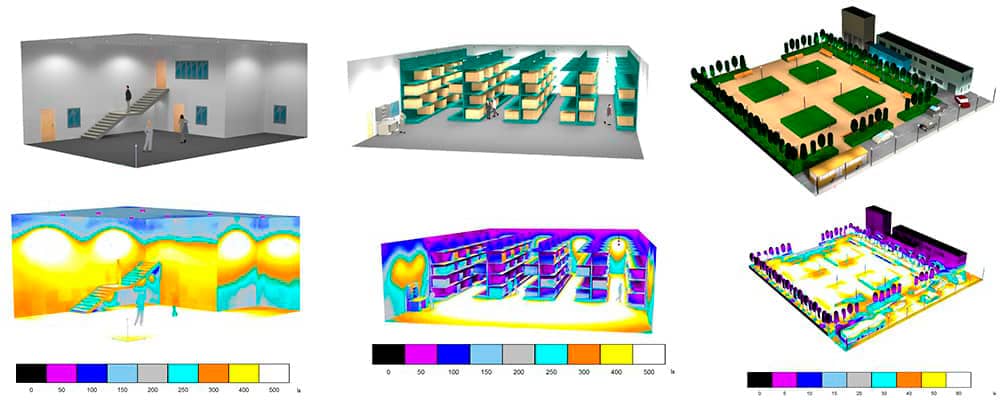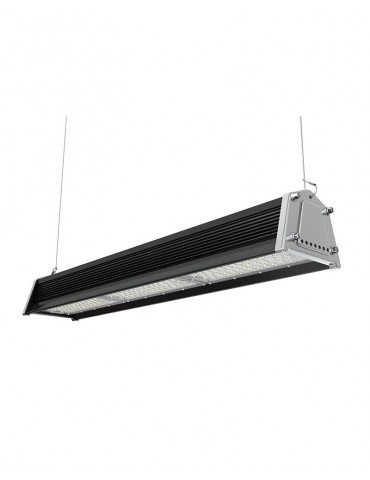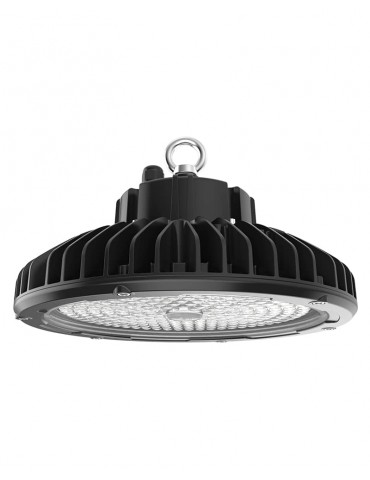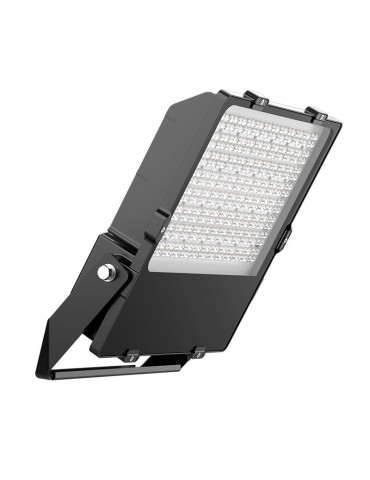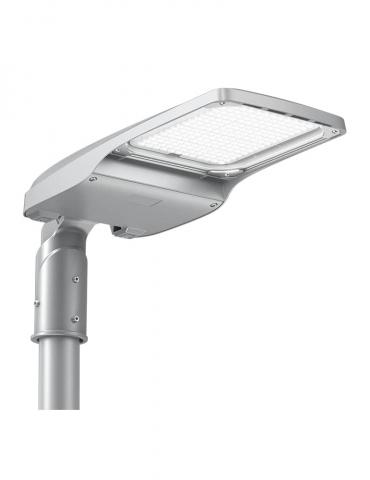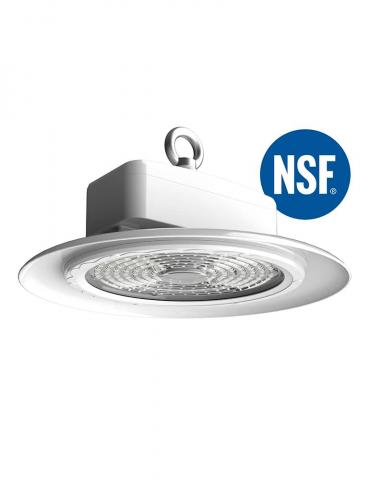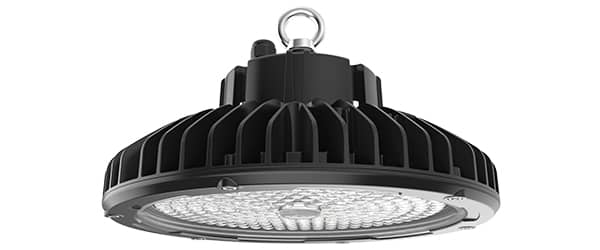
Zigbee: Everything you need to know
Zigbee is an open standard communication protocol that allows us to act at the same time on all Zigbee devices added to the network. The open standard helps to make it compatible with a multitude of electronic devices and that any manufacturer can choose to use this low-cost, low-power solution.
This technology is based on the IEEE 802.15.4 wireless personal area network (WPAN) standard. Currently it is mainly applied in home automation, including countless applications at the industrial level or to create a smart home. Zigbee uses the ISM band, namely 868 MHz in Europe, 915 MHz in the United States and 2.4 GHz worldwide, a band known to be typical of the Wi-Fi signal.

NEED MORE INFORMATION AND PRICES ▶ REQUEST WITHOUT OBLIGATION
Zigbee has been created to have an alternative to WiFi and Bluetooth, so that you can synchronize wireless devices using a low-power and economical technology. Supports growth better than other communication systems in areas such as range and resilience to shocks.
Zigbee networks allow different types of network, highlighting mainly the mesh type, since it brings robustness and efficiency to the network. It is therefore the most used for the facilities it provides.
Within the devices, we differentiate three different types that can be found within a Zigbee network:
- Coordinator or controller: It is the most important device in the network and there can only be one for each Zigbee network formed. Is responsible for establishing and organizing the routes that allow communications between the devices of each node. This device is usually connected to another communication device that allows you to connect to the Internet.
- Router (ZR): Links the devices or nodes so that it can transfer and execute commands issued by the controller. - End device (ZED): These are the simplest devices in the network. They only receive information, but cannot send to other devices. Represent LED luminaires, doors, cameras, sensors, switches, etc.
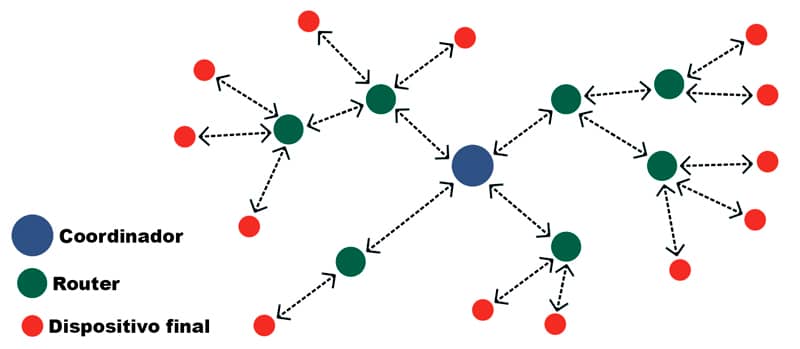
Control your LED lighting with Zigbee
Zigbee led luminaire suggestion
The Zigbee LED high bay from the CEL-T series offers a light output of 140lm/W. It is designed to offer the best light comfort in a wide variety of businesses: industrial buildings, workshops, logistics warehouses, etc.
Its technology and different powers allow it to adapt to the requirements of low, medium and high-rise rooms.
In practical terms, if we use a Zigbee system to control a set of LED lamps, it will be each of the Zigbee devices or receivers that, using a common language for communicating, act as repeaters that transfer a signal to the next device or receiver, which send the signal to the LED luminaires. By acting on the Zigbee devices and not on each LED luminaire, we help to ensure that the network is not saturated. In addition, we use the same AC cable that feeds the network, without any additional cable parallel to it.
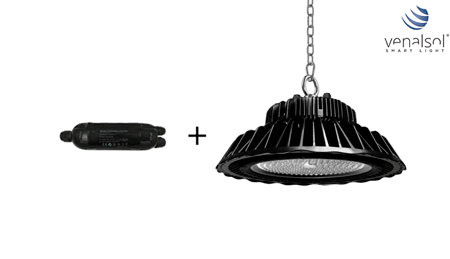
Using Zigbee we can control the on and off of our company’s LED lighting, regulate the intensity by means of light or motion detectors, which taking advantage of natural light will provide us with only the necessary LED lighting, shall detect the presence of vehicles or persons to switch LED luminaires on or off, etc.
Configure your LED lighting from your mobile device
Through an application on our smartphone, tablet or laptop we can control and adjust the settings that are best adapt to the needs of our business and thus achieve a system that is fully autonomous and takes advantage of this technology to create smart spaces and homes.
For the use of this control system Zigbee is essential to create a WiFi network zone, not being necessary access to the Internet, fact that would limit its possible interaction with the control panel preventing remote interaction remotely.
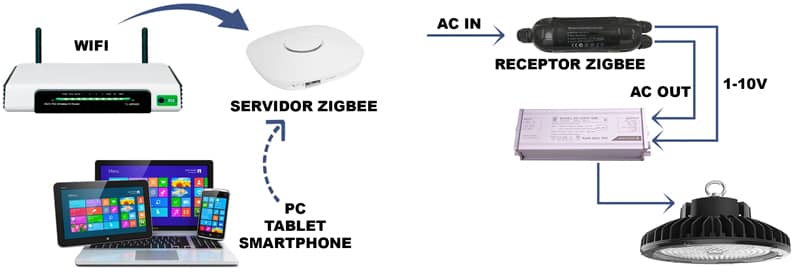
Therefore, it is only essential to have a Router to provide the necessary network for the control of LED lights, although Internet access is always recommended.
The distance between the Zigbee server and the first Zigbee receiver should not be more than 10m away (considering that there are no large interferences which would reduce its communication range). As the distance between Zigbee receivers should not exceed 10m away. Although these distances seem short, the number of Zigbee devices that ultimately make up the network may mean that your network has a much larger size despite being a technology designed to manage short-distance communications.
FREE LIGHT STUDIO WITH OUR LED LUMINAIRES
Currently, there is a wide range of LED luminaires with different characteristics and prices, which can be confusing and overwhelming.
For greater peace of mind of our customers, from Venalsol Smart light we carry out free light studies using software specialized, in which we simulate in 3D the areas to be illuminated, obtaining the most optimal option and that best suits the needs of each client.
